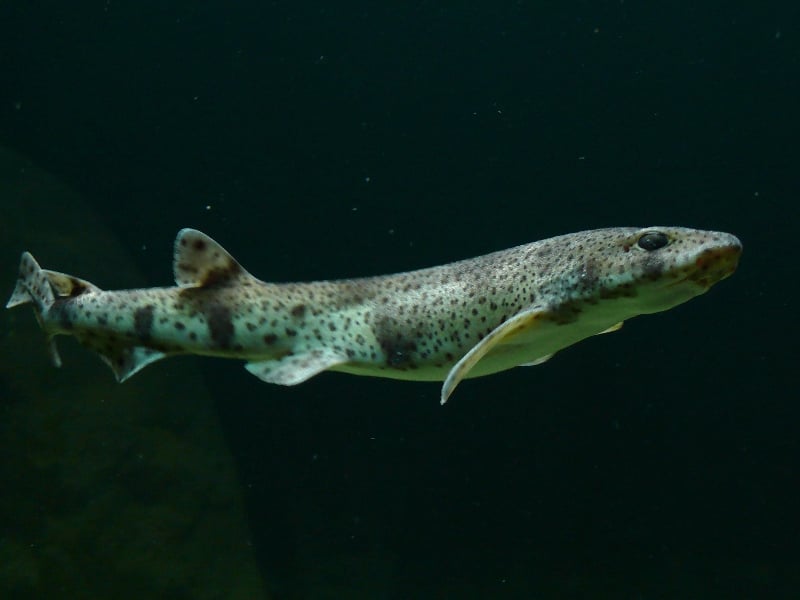
The world’s waters are home to an incredible variety of shark species, each with their own unique characteristics. Among them is the bull huss, a species that often flies under the radar compared to its larger, more famous relatives such as the terrifying great white shark.
However, this lesser-known shark has plenty to offer, especially for those interested in seeing marine life up close. Found in waters around the UK and other parts of the world, the bull huss is just one of many intriguing sharks you can discover at Blue Planet Aquarium.
What is a bull huss?
The bull huss, also known by a variety of names including nursehound and greater spotted dogfish, is known scientifically as Scyliorhinus stellaris. It belongs to the Scyliorhinidae family—the largest family of sharks, commonly known as catsharks.
In terms of appearance, the bull huss stands out due to its distinctive body markings. Its slender body is covered in dark spots with a sandy or grey-brown background, giving it an unmistakable look.
Another unique feature of this species is its large, rounded pectoral fins, giving it an almost cat-like grace as it glides across the ocean floor.
Where do bull huss live?
Their preferred habitat is rocky, coastal areas, especially those with plenty of hiding spots like caves and crevices, and can be found of depths ranging from 1-400m.
Interestingly, this species thrives in temperate waters and is commonly found off the coast of the UK. You may also spot them in the northeastern Atlantic, from Norway and the Shetland Islands down to Morocco, as well as in parts of the Mediterranean Sea.
What do bull huss eat?
Bull huss are nocturnal hunters, mainly feeding at night. Their diet primarily consists of crustaceans, molluscs, and small fish. Equipped with strong jaws and sharp teeth, they can easily crack the shells of crabs and lobsters, making them deadly predators.
Their spotted camouflage allows them to blend into their surroundings, utilising ambush techniques when hunting, and hiding among rocks and seaweed before launching a quick attack on their prey.
Did you know?
Bull huss are oviparous
Unlike many sharks that give birth to live young, the bull huss lays eggs. These eggs are encased in protective structures known as “mermaid’s purses.” Each purse has curly tendrils designed to wrap around seaweed or rocky surfaces, preventing it from drifting away. After several months, a tiny shark emerges, fully capable of surviving on its own!
The name’s origins
The name “bull huss” is thought to come from an old fisherman’s tale. Legend has it that these sharks were once known as nurse hounds because they cared for smaller sharks, with “huss” being a mispronunciation of the word “nurse”.
A benthic shark
As a benthic species, the bull huss spends most of its time at or near the seafloor. This preference affects both their diet variety and their hunting techniques
Largest type of catshark in UK waters
Among the many species of catsharks, the bull huss is the largest found in UK waters. While most grow to around 1.2 meters, the biggest bull huss can reach up to 160cm, making them an impressive sight for any diver or aquarium visitor.
Come and see for yourself
Curious to meet a bull huss up close? Blue Planet Aquarium is proud to be home to these incredible creatures, along with many other species of sharks and aquatic animals.
Whether you’re a marine life enthusiast or just looking for a family day out, we’d love to see you, so get your tickets booked now and visit the bull huss in person.
Type
Fish
What do they eat?
Small crustaceans, molluscs, and fish
Size
Up to 160cm in length
Water Type
Temperate water
Where are we?
North East Atlantic
